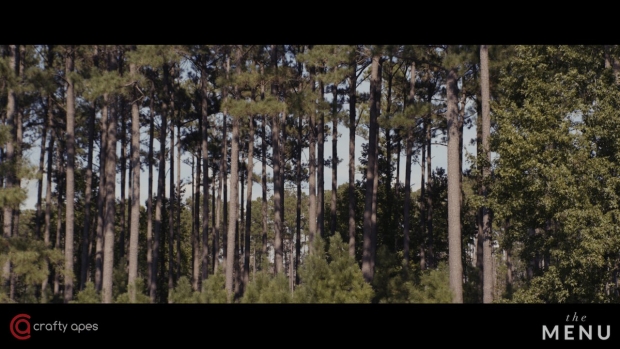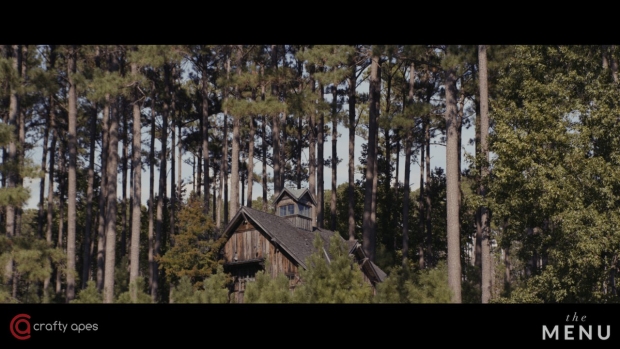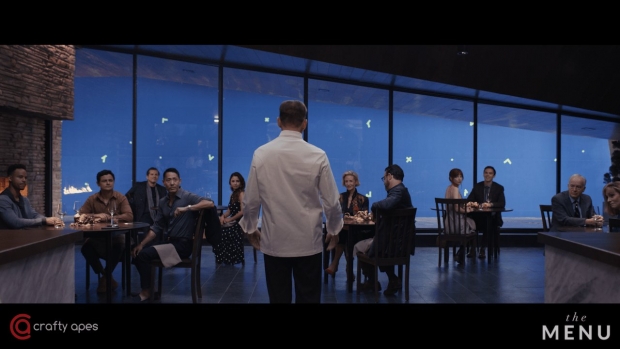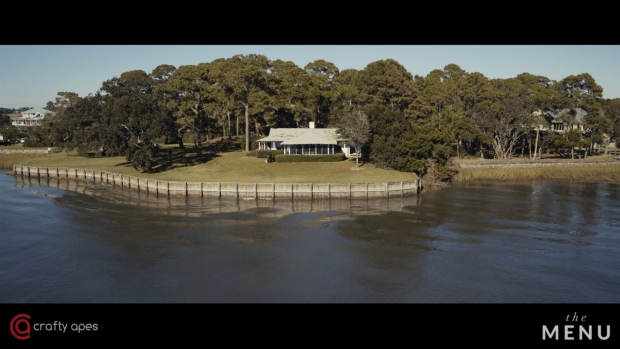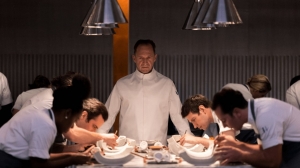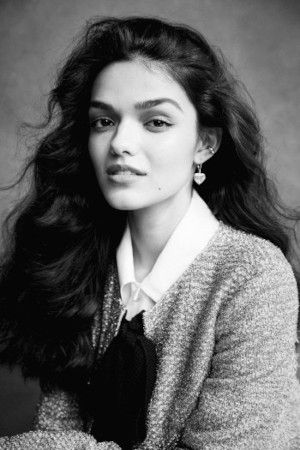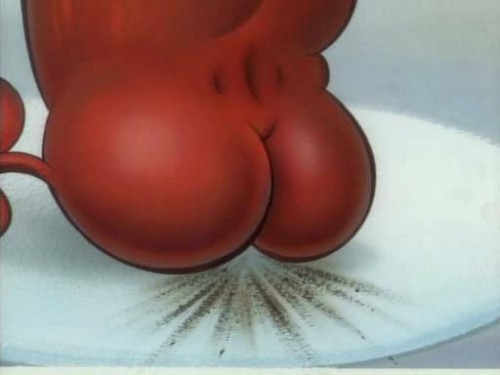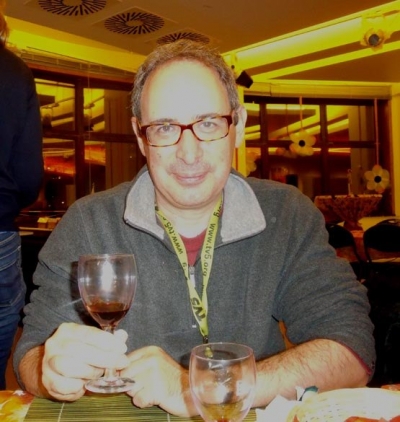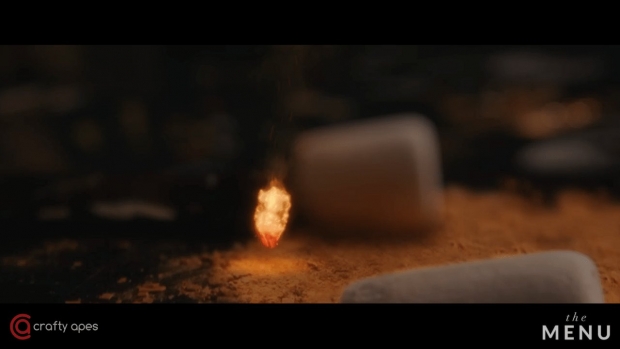
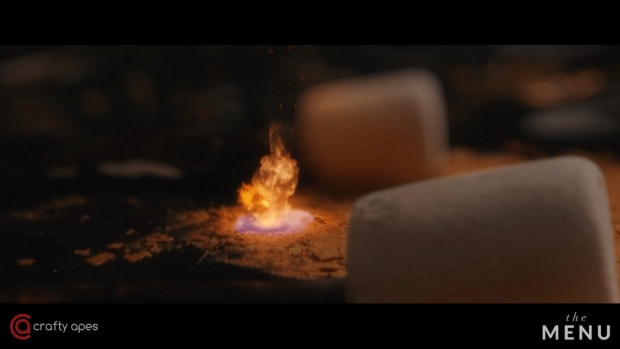
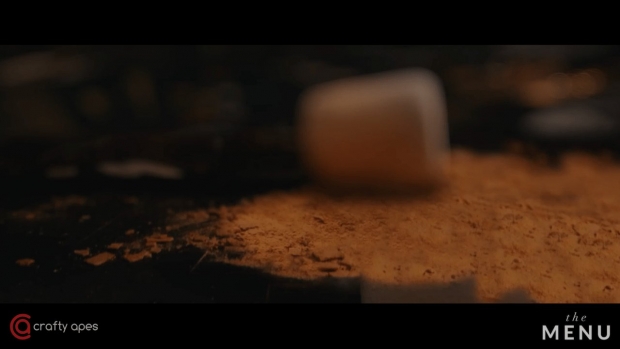

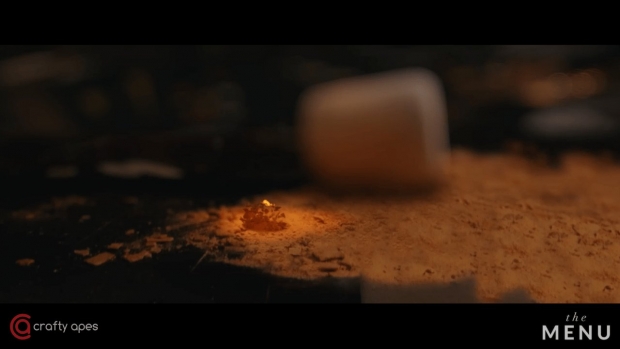
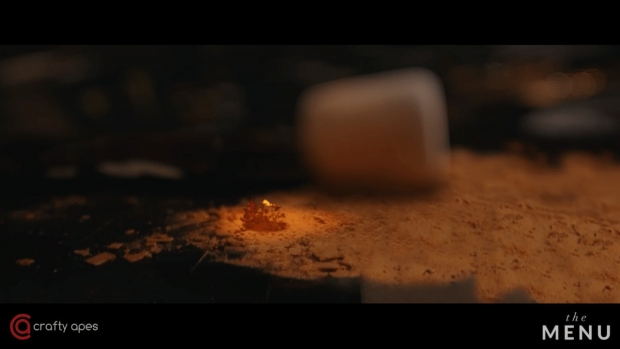
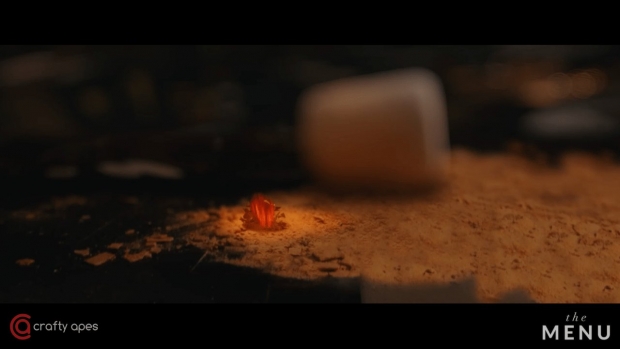
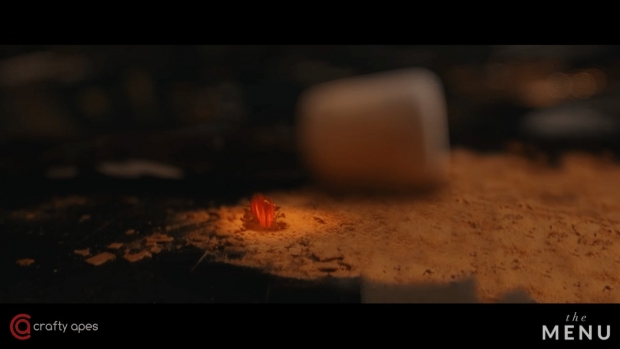

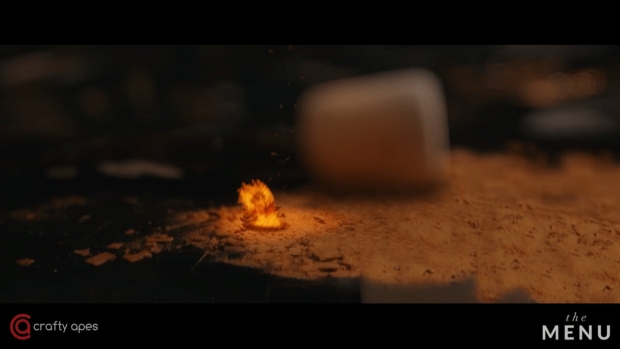

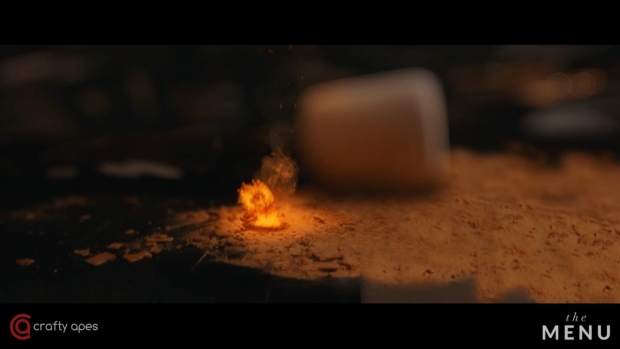
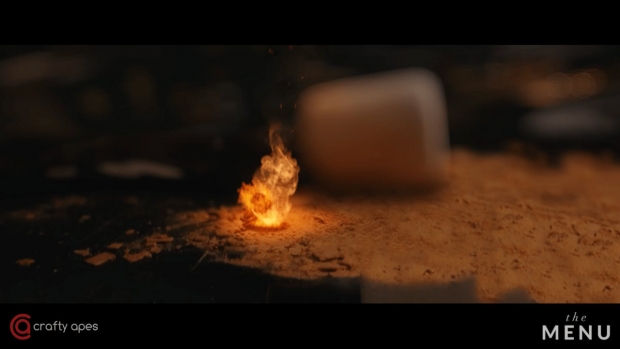



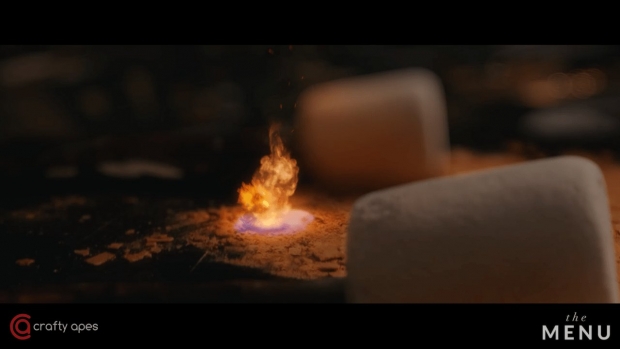
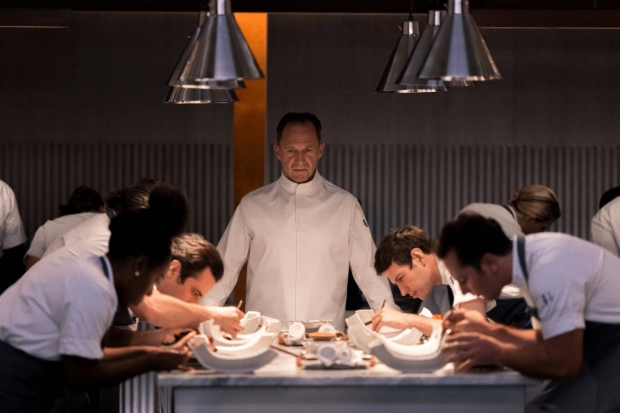
It’s no secret that the restaurant business is ruthless; there was even a Food Network reality show called Cutthroat Kitchen. But an exclusive establishment on a remote island took “cutthroat” to The Most Dangerous Game level in Searchlight Pictures’ dark satire, The Menu, directed by Mark Mylod and starring Ralph Fiennes, Anya Taylor-Joy, Nicholas Hoult, Hong Chau, Janet McTeer, and John Leguizamo. The movie is not streaming on HBO Max.
Smith concludes, “The Menu was a big 2D show. But, the CG, apart from being photoreal, had to sit in the shot. The visual effects were never the focal point of the movie. It was more of a supporting role.”
Providing an assortment of visual effects across more than 300 shots was sole vendor Crafty Apes, working under the guidance of Visual Effects Supervisor Marc Smith and Compositing Supervisor Tanner Bartlett.
Mylod wanted to tell the story in real-time. “It was quite bright when you saw them outside and it gets darker and darker,” says Smith. “There were certain tones that Marc wanted in the sky. We created an array of three cameras, filmed for about half an hour at different times of the day, and stitched that together. We used that for the backgrounds so we wouldn’t have to worry about creating simulations for water. As procedural water has always been something I’ve hated doing because it’s so organic, like fire. If it moves this way, what if there is a current and it swells? Then there is the white cap and undercurrent. There is so much going into water simulations we tried to steer clear of having to do that for this show. Tanner is a master at doing water patches like when Doug Verrick goes into the water.” Bartlett adds, “Thankfully, it was a dark shot. We had a lot of good element plates of just water and ripples so we were able to patch that on top of where we needed to remove the wire or the scuba divers being there to release him. There was a lot of patchwork, roto, and soft feathering to make it all blend in.”
Trevor Hogg is a freelance video editor and writer best known for composing in-depth filmmaker and movie profiles for VFX Voice, Animation Magazine, and British Cinematographer.
Continuity was important. “Tanner and I went through some of the interior shots and we see a tree on the screen left and it’s looking through this window,” remarks Smith. “When we looked at the CG build there needs to be a tree there for continuity. There was a lot of fact-checking and looking at different angles of what we would see through that window. When you watch the movie you see a lot of ocean and clear sky. We had to put the restaurant on a hill so that you wouldn’t perceive the bottom area of the grassland. You would see straight out into the ocean so it would match for continuity. That day for night shot that we did was a full CG render. As far as the weathering goes the original build was clean and we went through the process that this restaurant has been here for a couple of years now. There was all this vegetation and with the way that Chef was, moss on the roof and the exterior would be more weathered and rustic.”
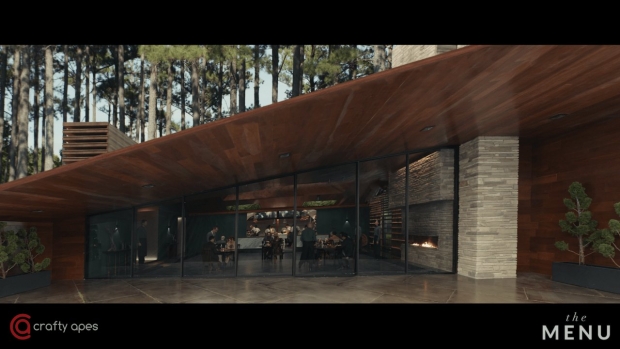
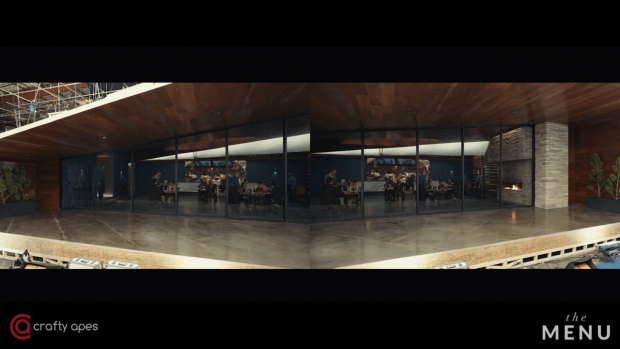

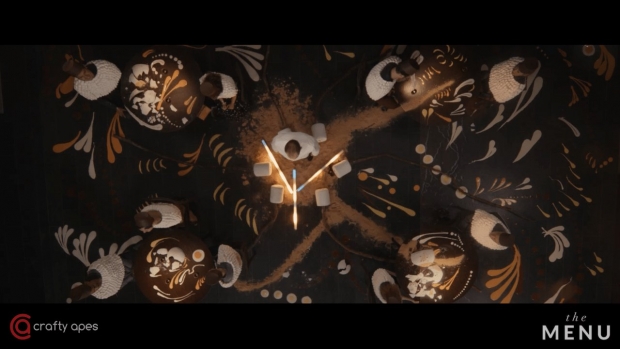
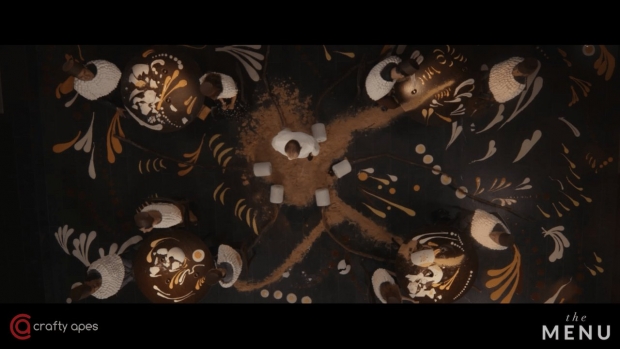
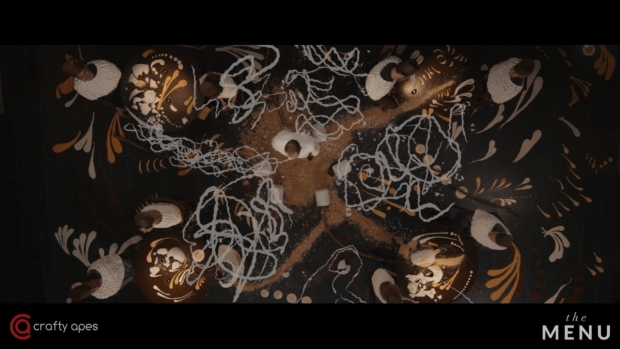

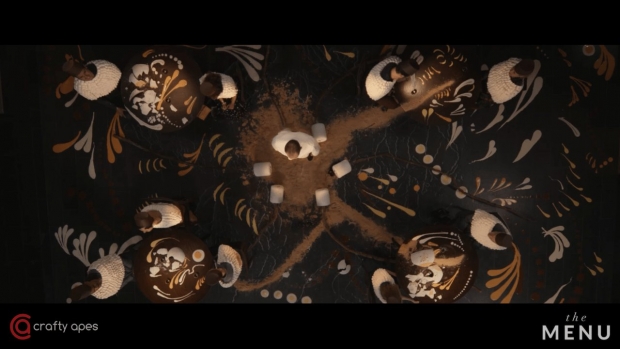

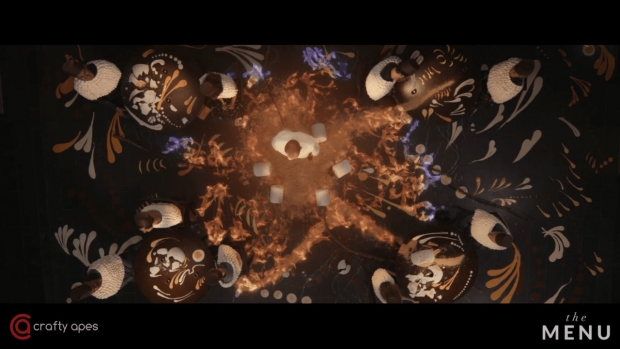

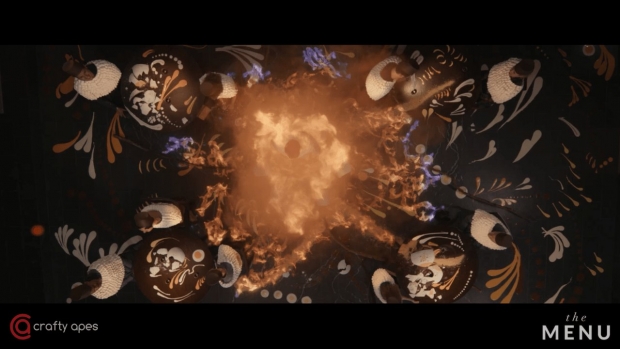
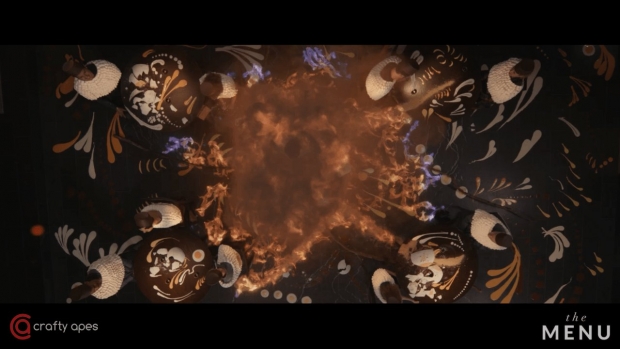

Practical locations and sets in Savannah, Georgia and CG were blended together to create the private island owned by renowned Chef Julian Slowik (Ralph Fiennes). The island really existed, as did the cottage, which is where they shot the exteriors of the beach, goats, and herb garden. There was a set with big doors that swung open. The real cabin was behind it and bluescreen was put on the trees, which allowed Tanner to key them out. According to the compositing supe, “The CG restaurant that we built came from the art department’s schematics for how it should look from the interior, and it used some of the LiDAR that was captured on a soundstage of the restaurant’s exterior. We added chimneys and rooftops to sit the restaurant in the real island. We were fortunate to have Adam Wagner as our onset visual effects supervisor for the entire shoot. I was on another show at the time. We talked daily and Tanner told Adam what he needed as far as composites.”
Let it be know, the two are both major The Lord of the Rings fans and own a variety of swords. “These aren’t sharp,” laughs Smith when asked if he got to add any culinary knives to his collection. “The script for The Menu didn’t follow the usual Hollywood format. It had quite a few of twists and turns in areas that I didn’t expect. When Tanner and I watched the rough edit, we wondered, ‘Where are you going to put comedy as the movie is slated as comedy?’ But sure enough, Mark Mylod managed to squeeze it in there.”
Effects simulations were required when Chef Slowik sets himself and his restaurant on fire. “Ralph did the motion and then we had the stunt double on fire for real in the plate,” Smith shares. “We were taking the head of Ralph, matching it to the motion of the body, and doing a blend at the neckline so that it worked together. As the cut went on Mark didn’t want to linger on him being on fire so we ended up with a big wide shot with the smoke in front of the camera. The poor guy set on fire dropped to his knees because that’s what Ralph’s character did. We had a 3D scan of Ralph so when he was doing the action, we did a match move of him; that allowed us to have collisions with the fire so it could be attached to his arm so it looked like he was more involved with it. Oil was drizzled over the floor so Ralph was going to be a big yellow fireball with black smoke billowing because he would have filled the camera plate and you wouldn’t have seen anything. Mark wanted this blue highlight over him because it is oil burning.”
90 percent of the work for the interior of the restaurant were 2D window composites from the camera arrays for the background. “That in itself is a mission because of the pure volume,” observes Smith. “We spent a couple of days in the studio near the end. The shot looks so great but you have to start picking the work apart, such as, ‘There is blue spill here. A tracking marker is over there.’ We were scrutinizing every shot in 4K on the onset screens.” A particular dinner shot proved particularly challenging. “We had two conflicting angles of the characters eating dinner that probably had a 45-degree offset,” recalls Smith. “And we had to bring them together to create a combined image that worked with the guys walking around.” Fortunately, the camera was locked off. “There weren’t any crazy camera moves to match,” remarks Bartlett. “The shot is a wide pan looking into the restaurant from the outside. They chopped it in half, so the left side of the restaurant is for one plate and right side from another. We had to squish them together and the CG team rendered out our exterior set which was used for the chimney and the top half of roof and stairs.”
“The closeup of Chef’s hand releasing the coal was a complete Frankenstein shot,” reveals Smith. “We didn’t have a plate for that. The hand was punched in from another plate where the resolution wasn’t fantastic. The coal and steam were all CG. When the coal drops down it was a stitch from reference images that we had. The ground floor was projections that we built from proxy geometry. When it hits the floor and bounces, there were fire and smoke simulations. It was a shot that Mark really wanted in the show but didn’t shoot it as he needed to.” There was room for creativity. “Mark was specific about what he wanted but for that shot he was open to collaboration,” states Bartlett. “His hand is supposed to be so many feet off the ground, but the hand plate was from here up. How do we fit that in the frame so when he releases the coal it’s in the center of the frame? Now we’re following it down. How many seconds is that going to take for the coal to hit the ground? There were a lot of logistics but everything worked together out of the box because they were all shot at the same time.”
Blood and gore were treated subtly. “When the guy shot himself and the blood splatter was on the clear Perspex curtain, we did three versions,” states Smith. “Mark didn’t want it to be like Quentin Tarantino with blood everywhere. We did the same thing with the finger cutting. Mark told us to tone it down. He didn’t want blood spurting out like a cannon but dark and realistic.” Compositing blood can be tricky. “For this movie, they had practical blood in the plate so whenever you wanted to enhance that it sometimes can be difficult to find the right element or make a CG element that matches it perfectly,” notes Bartlett. “It’s also enjoyable to do in a dark way like the hand suff.” Hardly any CG augmentation was done to the food, Smith reveals. “We added the salmon that was missing on one of the plates, but we didn’t do a lot of that.”

